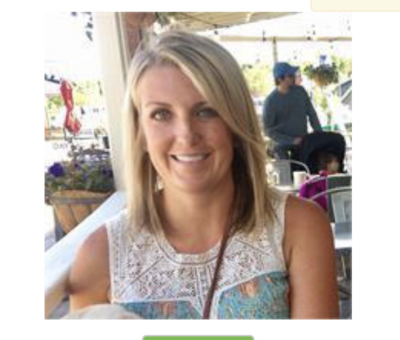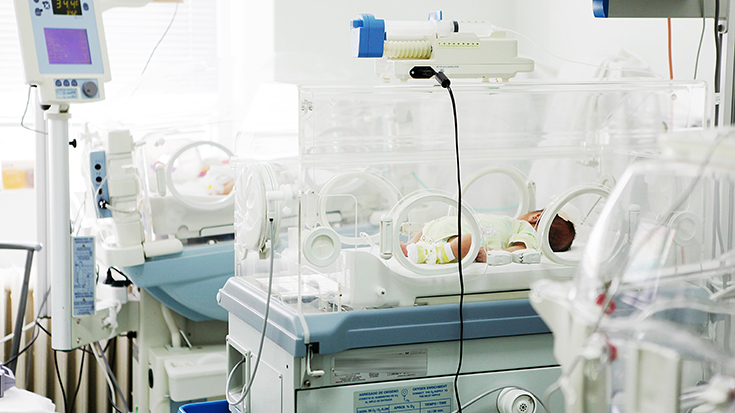
It’s 7 a.m. on a Monday in the Cardiac Intensive Care Unit (CICU) at Nemours/Alfred I. duPont Hospital for Children in Wilmington, Delaware. Justin Stevenson, Cardiac Center Lead Respiratory Therapist for the CICU, is assigned to the Cardiac OR. His co-worker, Kristin Harris, is assigned to the Cardiac Cath lab. Two other RTs are assigned to the CICU.
Justin and Kristin begin their day by changing into OR scrubs and logging onto a computer to look at the master daily schedule. This schedule shows what cardiac cases are scheduled for the day. While discussing their agenda, Dr. Ellen Spurrier joins their conversation. Dr. Spurrier is the Cardiac Anesthesiologist on the OR cases; she makes Justin aware of her special requests for the day.
A typical day for the Cardiac OR and Cath lab RT starts like this, yet the two jobs are different.
Justin heads to the OR to prepare for the first case. Today’s first case is a Stage 1 Norwood operation for Hypoplastic Left Heart Syndrome. This congenital heart defect is common in Nemours’ Cardiac center.
In preparation for this case, Justin starts by running a self-test on the anesthesia vent. His set up is then as follows:
 Justin Stevenson.
Justin Stevenson.- Prime three pressure lines (RA, PA, and arterial)
- Set up intubation supplies
- Prime the IV
- Set up the monitor
- Set out meds prepared by the pharmacy
- Prepare blood warmer
Once the OR room is prepped, Justin assists Dr. Spurrier with bringing the patient into the OR. He then assists Anesthesia with the following:
- Induction of anesthesia
- Placement of IVs
- Intubation
- Insertion of gastric tube
- Insertion of TEE (transesophageal echocardiography) probe
- Documentation throughout the whole procedure
After the patient separates from cardiopulmonary bypass, Justin will cosign blood products with the physician and prime blood for the warmer. At the end of the surgery, Justin will manually ventilate the patient to the Care Unit, where he will be met by the RT taking over post-operative care.
In the Cath Lab, Kristin is busy preparing for a Combined Right Retrograde Left Heart Catheterization. This procedure is one of the most commonly performed in Nemours’ Cath lab. Her preparations include:
 Kristin Harris.
Kristin Harris.- Turning on the anesthesia ventilator and assuring O2 tanks are full in case of emergency.
- Calibrating the O2 analyzer
- Preparing intubation supplies
- Confirming sevoflurane and isoflurane tanks are full
- Priming the IV
- Medication preparation with CRNA
Once the patient is on the table, Kristin will assist with:
- Induction of anesthesia
- Intubation
- IV insertion
- Documentation
- Extubation (most cath lab patients are extubated in the OR)
After the Cath lab procedure Kristin will assist with transferring the patient to the PACU to recover, providing supplemental oxygen as needed.
As you can see, the Cardiac OR and Cath lab RT jobs are quite different from the typical day of the bedside or even ICU RT. You are probably asking yourself, does this fit into our scope of practice? The short answer is yes. Per Delaware’s Division of Professional Regulation, if we are working under the direct supervision of a Physician and have a competency of the procedure, we are covered.
Competencies for the RT role in the Cardiac Cath Lab and OR are performed with orientation and annually at Nemours.
This position was created in 1998 upon the birth of Nemours Cardiac Center. The newly formed cardiac anesthesiology group saw the need for a position centered between an Anesthesia Tech and a CRNA. RTs that already worked in the CICU met the requirements very well: a health care professional familiar with airway management and respiratory management of patients with congenital heart diseases.
Today the team has grown to be a team of 13 Cardiac RTs, nine of whom assist in the Cath Lab and OR. They provide 24/7 coverage, with most of the team rotating a call schedule. While Nemours RT department staffs 12 full-time employees daily, the Cardiac Center pays for two additional full-time employees Monday through Friday and on-call.
This position, according to Dr. Spurrier, “gives RTs exposure to the OR environment and acquired skills that the typical RT may not ever encounter.” Skills such as blood administration, anesthesia documentation, and continuous medication infusion under the supervision of an anesthesiologist are all part of the Cardiac OR RT’s responsibility. Working side by side, day to day, “allows for a highly practiced team effort, where the RT can anticipate the needs of the patient,” continued Dr. Spurrier.
Cardiac CRNA Nguyen Nguyen is the sole CRNA that works in the Cardiac OR. Nguyen started his career as an RT in 1996. He knows firsthand how this expertise of the Cardiac RT is warranted.
“Throwing in the anesthesia component is a valuable skillset and opportunity for the profession,” Nguyen said.
Katlyn Burr, Director of Respiratory Care and Sleep Medicine at Nemours, is exceptionally proud of being able to provide RTs on her staff with this opportunity.
“Having an RT as a part of the Cardiac team and being able to show our skill set in a unique way is a true example of inclusive collaboration, and we have seen this translate into better patient outcomes in this environment,” Burr said.
For RT departments interested in implementing such a program, Dr. Spurrier recommends choosing participants that already have exposure to patients with congenital heart diseases. Having an experienced and knowledgeable RT on her team provides her with a dependable second pair of hands.
Email newsroom@aarc.org with questions or comments, we’d love to hear from you.















